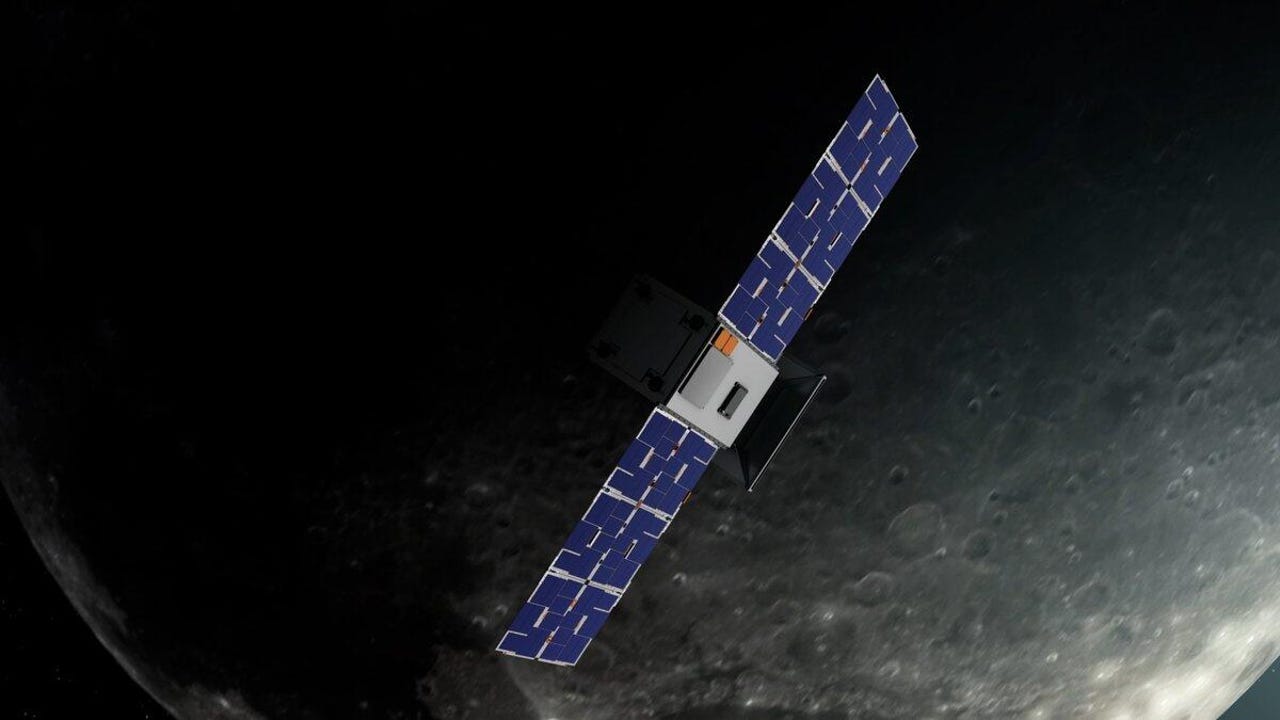































 Image: NASA
Image: NASA NASA has successfully reestablished contact with CAPSTONE, the small satellite it launched into space to explore a unique orbit around the Moon.
After the spacecraft's successful July 4 deployment from the Rocket Lab Lunar Photon, CAPSTONE's communications with NASA went down. At 9:26 am ET on July 6, the space agency re-established contact with the spacecraft and concluded CAPSTONE remains in good health and on the right path to the Moon.
The CAPSTONE mission is a key step in advancing NASA's Artemis program, which will culminate with NASA landing the first woman and first person of color on the Moon. The aim of CAPSTONE (Cislunar Autonomous Positioning System Technology Operations and Navigation Experiment) is to test different technologies in a lunar orbit called a "near rectilinear halo orbit" (NRHO). In the near future, NASA wants to use this particular orbit as a path for Gateway -- a space station that will provide support for the Artemis mission and for deep space exploration.
SEE:NASA's Mars helicopter has a problem. This clever software trick could fix it
CAPSTONE's journey to the lunar orbit should take about four months. The satellite launched from Earth on June 28 aboard a Rocket Lab rocket. Now that CAPSTONE is fully detached from the rocket, it will use its own propulsion and the Sun's gravity to navigate the rest of the way.
However, it does need to make some trajectory correction maneuvers. The first of these was originally scheduled for the morning of July 5. That was delayed due to the communications issues. However, the maneuver is now back on track, and is scheduled to be performed as early as 11:30 am ET on July 7.
The first trajectory correction maneuver is intended to begin a series of small corrections, increasing the accuracy of the transfer to the lunar orbit. Upon successful completion of the maneuver, the spacecraft remains on track to arrive at the lunar orbit on November 13. The Advanced Space mission team that initially re-established contact confirmed that CAPSTONE is in its expected location, and they're continuing to work to isolate the source of the communications lapse. Testing so far suggests the issue was triggered by the communications system's commissioning activities.
Despite this minor setback, other milestones of CAPSTONE's initial deployment were achieved as expected. The spacecraft has deployed solar arrays, stabilized, began charging its onboard battery, and readied its propulsion system for its first maneuver. CAPSTONE also made initial contact with the Deep Space Network (DSN), a spacecraft communication ground segment facility in Madrid, Spain, followed by signals to a communication center in Goldstone, California. This allowed operators to determine the CubeSat's approximate position and velocity.
Once it arrives at the orbit, CAPSTONE is intended to orbit the Moon for a period of at least six months to collect data on the characteristics of the orbit -- specifically, the power and propulsion requirements for maintaining its orbit as predicted by NASA models. By transmitting this data to NASA's Lunar Reconnaissance Orbiter (LRO), which has been orbiting the Moon since 2009, as well as ground stations, CAPSTONE will demonstrate the capacity of spacecraft-to-spacecraft navigation solutions, as well as communication standards with Earth.
CAPSTONE's success would mark the latest in a string of victories for smaller and less costly spacecrafts, and would pave the way and expand opportunities for sister space exploration missions to destinations across the Solar System.
 Tags quentes :
Inovação
Espaço
Tags quentes :
Inovação
Espaço